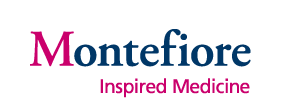Strategies to Help Adult ED Patients Quit Smoking
| Status: | Completed |
|---|---|
| Conditions: | Smoking Cessation, Tobacco Consumers |
| Therapuetic Areas: | Pulmonary / Respiratory Diseases |
| Healthy: | No |
| Age Range: | 21 - Any |
| Updated: | 1/12/2017 |
| Start Date: | January 2006 |
| End Date: | May 2008 |
The purpose of this study is to determine whether a brief, focused intervention in the
hospital emergency department is effective in helping adults quit smoking.
hospital emergency department is effective in helping adults quit smoking.
In urban communities, the prevalence of tobacco use among adults visiting a hospital
emergency department (ED) nears 40%, well in excess of the 25% smoking prevalence rate of
the general population. Many of these patients lack easy access to primary care, suggesting
the ED may be an attractive locus to initiate tobacco cessation efforts. With over 100
million annual visits to U.S. EDs, it may be possible to engage millions of smokers in
tobacco cessation efforts. The major purpose of this study is to examine whether a
multicomponent intervention delivered in the ED by a Lay Educator to adult smokers
interested in quitting is more likely to result in cessation than usual care. A secondary
goal is to test whether patients who present to the ED with a tobacco-related illness (as
indicated by ICD9 code) are more likely to quit than ED smokers with a non-tobacco-related
condition. This will allow us to test the validity of the "teachable moment" as an opportune
time to engage patients in considering a behavioral change. The proposed study is a
randomized trial of a motivational interview, provision of six weeks' worth of nicotine
patches, literature, and post-visit follow-up (Enhanced Care) vs. referral to a cessation
clinic (Minimal Care) for ED patients who smoke. Eligibility criteria: age > 21 years,
contemplation or preparation stage of change, not admitted to hospital. All patients will
undergo a standardized stage of change assessment, and measurements of nicotine dependence
and exhaled carbon monoxide. All will receive a cessation fact sheet and referral card to
the smoking cessation clinic; the cards of those in the Enhanced Care group will have a
specific appointment date and time. The Enhanced Care group will receive a
language-appropriate pamphlet discussing smoking cessation. We will record the ICD9 codes
associated with each visit. Major outcome measure: cessation within 3 months of the ED
visit, stratified by treatment group. Secondary outcome measure: cessation within 3 months
of the ED visit, stratified by whether the visit was smoking-related. If smokers receiving
Enhanced Care are more likely to quit, then the ED could be considered a new, effective
locus for tobacco control, potentially reaching several million smokers. If patients with a
smoking-related diagnosis for the ED visit are more likely to quit than those with
non-smoking-related ICD9, then this supports the construct of the teachable moment.
emergency department (ED) nears 40%, well in excess of the 25% smoking prevalence rate of
the general population. Many of these patients lack easy access to primary care, suggesting
the ED may be an attractive locus to initiate tobacco cessation efforts. With over 100
million annual visits to U.S. EDs, it may be possible to engage millions of smokers in
tobacco cessation efforts. The major purpose of this study is to examine whether a
multicomponent intervention delivered in the ED by a Lay Educator to adult smokers
interested in quitting is more likely to result in cessation than usual care. A secondary
goal is to test whether patients who present to the ED with a tobacco-related illness (as
indicated by ICD9 code) are more likely to quit than ED smokers with a non-tobacco-related
condition. This will allow us to test the validity of the "teachable moment" as an opportune
time to engage patients in considering a behavioral change. The proposed study is a
randomized trial of a motivational interview, provision of six weeks' worth of nicotine
patches, literature, and post-visit follow-up (Enhanced Care) vs. referral to a cessation
clinic (Minimal Care) for ED patients who smoke. Eligibility criteria: age > 21 years,
contemplation or preparation stage of change, not admitted to hospital. All patients will
undergo a standardized stage of change assessment, and measurements of nicotine dependence
and exhaled carbon monoxide. All will receive a cessation fact sheet and referral card to
the smoking cessation clinic; the cards of those in the Enhanced Care group will have a
specific appointment date and time. The Enhanced Care group will receive a
language-appropriate pamphlet discussing smoking cessation. We will record the ICD9 codes
associated with each visit. Major outcome measure: cessation within 3 months of the ED
visit, stratified by treatment group. Secondary outcome measure: cessation within 3 months
of the ED visit, stratified by whether the visit was smoking-related. If smokers receiving
Enhanced Care are more likely to quit, then the ED could be considered a new, effective
locus for tobacco control, potentially reaching several million smokers. If patients with a
smoking-related diagnosis for the ED visit are more likely to quit than those with
non-smoking-related ICD9, then this supports the construct of the teachable moment.
Inclusion Criteria:
- >= 10 cigarettes smoked daily
- being discharged from the ED
- contemplation or preparation stage of change
- speaks English or Spanish
Exclusion Criteria:
- being admitted to hospital
- too ill to consent
We found this trial at
1
site
Montefiore Medical Center As the academic medical center and University Hospital for Albert Einstein College...
Click here to add this to my saved trials
